[kimitaku]
February 28, 2014 14:00
Take the Oedo Line Tsukiji Market Station toward Hamarikyu, and you will find a "tuna monument" in front of the intersection.

I read the inscription.
A hydrogen bomb test was conducted at Bikini Atoll in the South Pacific on March 1, 1954.
Then, some of the tuna caught from the exposed "No. 5 Fukuryu Maru" arrived at the market, and a Tokyo inspection revealed radioactive contamination.
The contaminated fish (sharks, tuna) were buried in this corner.
Nearly 460 tons of contaminated fish were found in more than 850 fishing boats nationwide, and it was written that market officials and fishery officials were also hit hard, such as panic throughout Japan and no "seri" was established in Tsukiji Market. I am.
It is written that this plate was made with donations (10 yen) from many children from all over the country so that such nuclear damage does not occur.
The date of creation of the plate is March 1, 1999.
It's just a small monument on the back of the intersection.
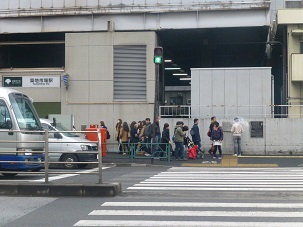
[Sam]
February 25, 2014 17:00
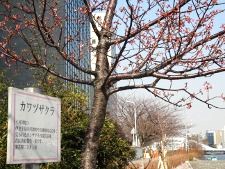
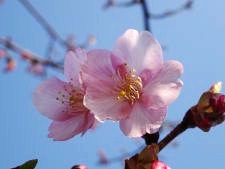
The kawazu-zakura (Kawazu Sakura) planted on the northeast side of Chuo-ohashi Bridge on Shinkawa Park / Sumida River Terrace is blooming.
It is said to be a natural hybrid of Kanhizakura and oshima cherry, the flower color is pink or light red, and is more pink than Yoshino cherry tree.
Instead of blooming and falling like Yoshino cherry tree, it begins to bloom in early February and is in full bloom after about a month.
It is also characterized by enjoying the flowering process and keeping the full bloom for a certain period of time.
However, the flowering time seems to be greatly affected by the weather of the year, and it is said that it blooms early in the beginning of the year, but it is said that it is very difficult to make the flowering forecast because it is delayed after mid-February .
In Kawazu-cho, where the name of this cherry tree originated, the Kawazu Sakura Festival is held for about one month from early February every year (February 5 to March 10 this year), but there are some years when the flowering time is delayed. It seems that there is.
In any case, spring is getting closer steadily.
[TAKK...]
February 10, 2014 09:00
From the morning of the 8th, snow continued to fall mainly on the Pacific side, causing record heavy snowfall in the Kanto Koshin region, and the snowfall at 11:00 pm reached 27 cm in the city center of Tokyo.
It is the first time in 20 years that it has exceeded 20 centimeters.
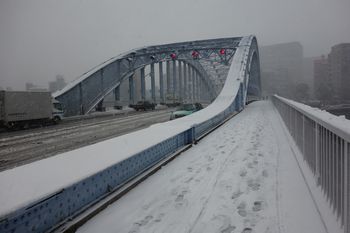 It was snowing on the Eitai Bridge.
It was snowing on the Eitai Bridge.
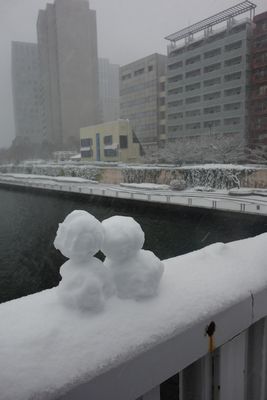 There are two snowmen on the balustrade.
There are two snowmen on the balustrade.
In the Edo period, it seems that there was a custom of enjoying snow viewing, and there were also snow viewing boats on the Sumida River.
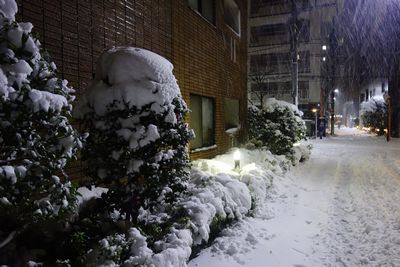 It went down violently until night.
It went down violently until night.
 It was fine the next day, but a lot of snow left on the sidewalk.
It was fine the next day, but a lot of snow left on the sidewalk.
As you can see in Ginza.
Snow is beautiful and has a taste, but it is also a troublesome thing, such as disturbing transportation and falling while walking.




 It was snowing on the Eitai Bridge.
It was snowing on the Eitai Bridge. There are two snowmen on the balustrade.
There are two snowmen on the balustrade. It went down violently until night.
It went down violently until night. It was fine the next day, but a lot of snow left on the sidewalk.
It was fine the next day, but a lot of snow left on the sidewalk.
